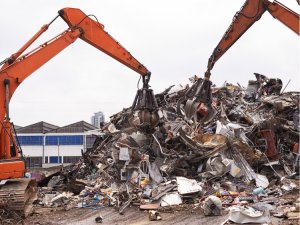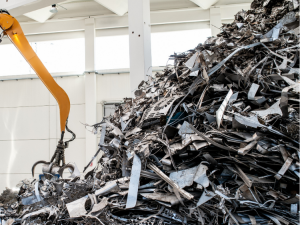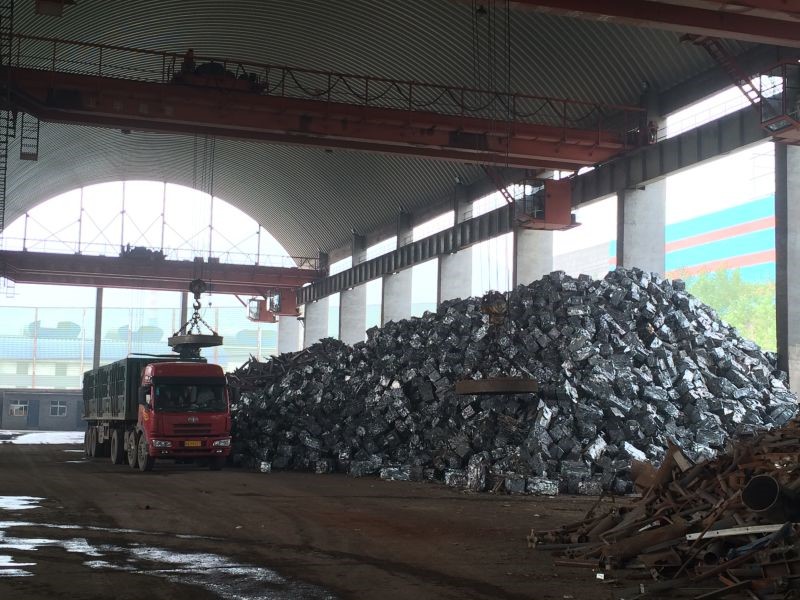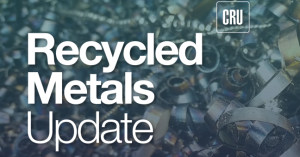
US scrap tags increase in December
US ferrous scrap prices have picked up in December, sources told SMU.

US ferrous scrap prices have picked up in December, sources told SMU.

November ferrous scrap prices landed even with October as the market settled, sources told SMU.

Most mills sought a drop of $20-40 per gross ton (gt) in busheling prices and a $20/gt dip for shredded and HMS. Despite efforts to buy cheaper, the busheling price settled at down only $20/gt.
SMU’s Current Sentiment Index for scrap decreased this month, a move mirrored by our Future Sentiment Index, according to the latest data from our ferrous scrap survey.

US busheling scrap prices have declined this month, while shredded and HMS tags have remained unchanged, according to market sources.

The scrap market in the US for September shipment has started to settle, with busheling seen down so far.

The scrap market traded sideways again in August with little change expected in September, according to sources.

Ferrous scrap prices are flat in the US for a second consecutive month, but tariffs on imports of Brazilian pig iron could change the game in August.

We can interpret that managed money still has expectations of price strength while physical participants are running closer to a balance on a net basis.

Ferrous scrap prices in the US have remained stable from May to June.
Ferrous scrap outlook for June appears on the upswing.

Domestic scrap prices tumbled across the board in May, but will June prove a bottom for the market?

The US ferrous scrap market for May shipment has basically settled, with the primes grades of #1 Busheling and bundles falling around $30 per gross ton (gt) from April levels. The obsolescent grades of HMS, shredded and plate and structural declined by $40/gt across several regions.

Ferrous scrap prices rose across the board in March as the market adapted to short supply and the volatile tariff situation, sources told SMU.
Domestic shredded scrap has experienced a renaissance in pricing since January. And that increase had caused traditional exporters to ship their material to domestic users instead of overseas. But with recent changes, this cycle may end with the resurgence of export demand and continued foreign exchange fluctuations.

The February scrap market has settled higher on all grades SMU covers.
US scrap tags rose for all the grades tracked by SMU in January in what was deemed a "restocking rally," sources said. The January market was up ~$20 per gross ton (gt) across the board. This did not include turnings, which were up $30/gt.

The US domestic ferrous scrap market had a rough 2024, despite optimism as the year started.

Ferrous scrap prices were largely rangebound to down at the November settle, market sources told SMU.

Scrap prices ticked up in October outside of Chicago and Detroit, scrap sources told SMU.
September scrap prices came in a soft sideways, with only mild hopes for a higher October, market sources said.
US scrap prices picked up in August, though near-term demand is expected to remain weak, scrap sources told SMU.

The US ferrous scrap market has essentially traded sideways for August. It may be too early to judge how much traction these prices will have with the trade.
Scrap prices came in mostly sideways in July, with prime scrap prices edging down while shredded and HMS tags ticked up slightly, scrap sources told SMU. They believe a bottom has been reached in the market.
Turkish scrap import prices were stable last week. CRU’s assessment for HMS1/2 80:20 and shredded was unchanged at $384 per metric ton (mt) CFR and $408/mt, respectively.

The ferrous scrap market experienced a sharp decline for March shipments. Prime scrap fell $60-70 per gross ton (gt) while shredded and other obsolete grades declined $40-50/gt. It seems these prices were accepted in the trade by dealers across the continent.
US ferrous scrap prices fell steeply in March for HMS, shredded, and prime scrap, sources told SMU.
As I see it, the market looked to be a perfect storm for consumers this month while two large steel mills tried to put a floor on hot-rolled coil (HRC). One source speculated that “flat rolled mills coordinated their downtime and will take out 250,000 tons of capacity in April,” which made them attempt to put a bottom on flat-rolled product.
The news in the West was that a mill in the Rocky Mountain region made a significant reduction in their usual purchase program, while still another small mill in the region also apparently reduced their buying program for February.
The March outlook for most ferrous products is trending down faster than most participants thought as recently as a week ago.